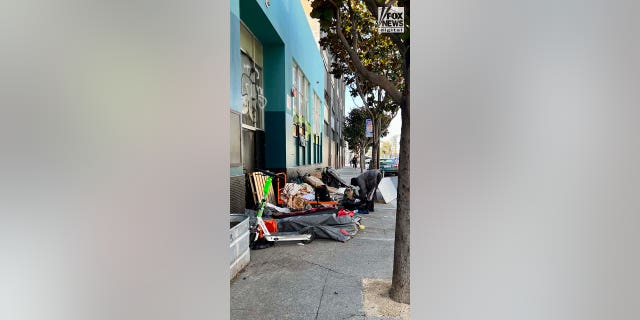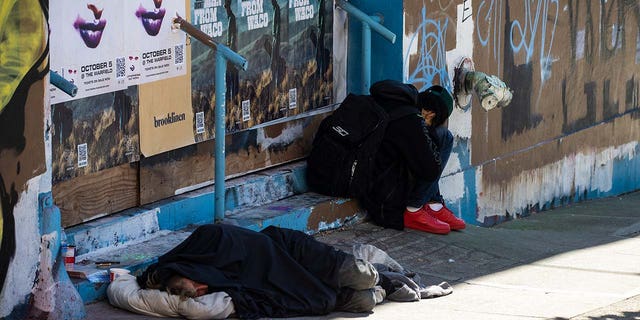Dave Chappelle slammed San Francisco during a surprise show at the SF Masonic Auditorium on Thursday night.
The 49-year-old comedian took aim at the homelessness crisis in the Golden City, which he referred to during the set as his “second home,” according to a report by SFGate.
“What the f— happened to this place?” Chappelle asked.
Dave Chappelle railed against San Franscico’s rampant homelessness during a surprise set in the Golden City. (Amanda Andrade-Rhoades/For The Washington Post via Getty Images)
Chappelle went on to recount an experience that he had a few nights earlier during his trip to San Francisco.
DAVE CHAPPELLE ADDRESSES BACKLASH, SAYS PEOPLE WANT TO TAKE ‘NUANCE’ OUT OF SPEECH IN AMERICAN CULTURE
The Netflix star told the crowd that he was dining out at an Indian restaurant in the city’s Tenderloin district and recalled that a homeless person defecated in front of the establishment just as Chappelle was walking in.
The Washington, D.C. native said that San Francisco had devolved into a “half ‘Glee,’ half zombie movie” and added that the entire city had become the Tenderloin now. The Tenderloin district of San Francisco is notorious for its crime, homelessness and drug problems.
“Y’all [expletive] need a Batman!” the comic declared.

The Netflix star told the crowd that he was dining out at an Indian restaurant in the Tenderloin district and recalled that a homeless person defecated in front of the establishment just as he was walking in. (Getty Images)
Chapelle’s criticism comes as the city is struggling to deal with a steep increase of homelessness and crime in recent years. It is estimated that 38,000 people are living on the streets in San Francisco on any given night, which represents a 35% increase since 2019.
Crime and homelessness concerns in San Francisco have been exacerbated by a police staffing shortage where the department saw a 12% decrease in its number of full-duty sworn officers from 2019 to 2022.
In addition, Chappelle’s experience with public defecation is not unique. In 2018, Sean Miller, a newcomer to the city developed a free app named “the Snapcrap” app to make it easier for people to report human feces and used needles on San Francisco’s streets.
“See something gross? Just snap a photo and press submit,” the app’s description reads.
The photos are passed to the city’s Public Works department, which has its own 311 app to report feces and trash, as well as potholes and graffiti.

It is estimated that 38,000 people are living on the streets in San Francisco on any given night, which represents a 35% increase since 2019. (Flight Risk for Fox News Digital)
Though San Francisco has become known as the epicenter of the homelessness crisis, the problem is statewide. A recent study found that a third of the U.S.’s entire homeless population and half of all unsheltered homeless people live in California.
The U.S. Department of Housing and Urban Development’s “Point in Time” survey, conducted in January 2022 and released at year’s end, indicated that at least 30% of all of America’s homeless population live in the Golden State, with homeless tents and encampments prevalent in some urban centers.
CLICK HERE TO SIGN UP FOR THE ENTERTAINMENT NEWSLETTER
The survey showed that around 115,500 “unsheltered” people – half of the total roughly 233,800 “unsheltered” population – reside in California.
Primarily, California’s homeless population increased by roughly 6% since 2020 compared to just 0.4% in the rest of the country. The biggest change occurred in the “homeless but sheltered” population, which spiked 17% in that period, while the “unsheltered” population rose by around 2%.

Homeless people are seen in Tenderloin district of San Francisco on September 24, 2022. The district is notorious for its crime, homelessness and drug problems. (Tayfun Coskun/Anadolu Agency via Getty Images)
“The rest of the country’s unsheltered population grew faster than California’s (4%), while its sheltered population actually shrank (-2%),” the PPIC wrote in an analysis of the report. The state is home to the country’s most Continuums of Care, which organize and administer services to the homeless population, with 44 centers compared to runner-up Florida, which has only 27.
According to a recent study, only a small percentage of San Francisco residents feel safe while taking public transit due to homelessness and crime.
CLICK HERE TO GET THE FOX NEWS APP
The poll published this week, conducted by the Bay Area Council, interviewed 1,000 San Francisco travelers on the city’s Bay Area Rapid Transit (BART) from March 30 – April 9 via email-and text-to-web survey and found that 17% of people feel safe and 45% of people who do not ride BART said it’s because they do not feel safe.
Additionally, the primary reason respondents gave for not riding BART more often was not remote work but rather 22% of people said that lack of security, fear and safety concerns were the reason for not riding more.
Fox News Digital’s Andrew Mark Miller and Peter Aitken and the Associated Press contributed to this report.
